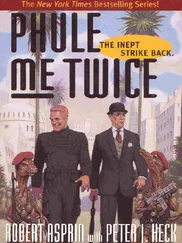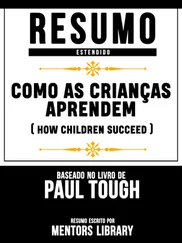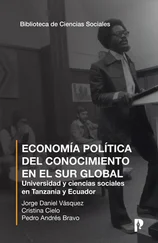We went to a diner on Western Avenue to eat eggs and drink coffee and talk. Like all of his friends, Mush grew up with a single mother, the one who bought him the Arthur boxers, a woman Gates described to me as “a beautiful person, but not necessarily equipped with the best parenting skills.” His extended family had a history of violence and legal trouble, and Mush rattled off a long list of siblings and cousins and other relations who were dead or in jail. When he was nine, Mush told me, his uncle was shot and killed in Mush’s home. “It was crazy,” he said. “It happened right in front of me.” As we talked, I found myself silently adding up Mush’s ACE score, each childhood trauma clicking the counter higher.
Mush’s personal history differed from Monisha Sullivan’s in its particulars—he witnessed much more violence growing up than she did, but the family disruptions she experienced were more profound: abandoned by her mother, separated from her father, her entire adolescence spent in foster care. Both of their childhoods, though, were unrelentingly stressful, and each of them was damaged by that stress in a deep and lasting way. Though neither had the opportunity (or the inclination) to submit to the kind of allostatic-load measurements that McEwen and Evans and Schamberg and other researchers performed on their subjects, we can assume that if they did, their readings would be off the charts. And yet, while the damage done to their bodies and brains by childhood trauma may have been comparable, there was a big difference in the way that damage expressed itself in their lives. Monisha took her stress and turned it inward, where it manifested as fear, anxiety, sadness, self-doubt, and self-destructive tendencies. Mush, by contrast, turned his outward: fighting, acting up in class, and, eventually, breaking the law in a variety of ways.
Mush started getting in trouble early: he was kicked out of elementary school for fighting with the principal. But his behavior got significantly worse when he was fourteen and his brother, who had enlisted in the army to escape the violence of the South Side, was shot and killed in a robbery near his base in Colorado Springs. “That’s what messed me up,” Mush told me. “I stopped caring about a lot of stuff after that.” As Mush described it, the only way he could escape the pain of his brother’s death was by gangbanging. “I was holding in so much,” he said. “I was like a ticking time bomb. And to clear my mind, I would just be out there on the block, acting bad, playing with guns and all that.”
Researchers from Northwestern University recently gave psychiatric evaluations to more than a thousand young detainees at the Cook County Juvenile Temporary Detention Center in Chicago—a facility where the majority of YAP students had spent at least a little time—and found that 84 percent of the detainees had experienced two or more serious childhood traumas and that the majority had experienced six or more. Three-quarters of them had witnessed someone being killed or seriously injured. More than 40 percent of the girls had been sexually abused as children. More than half of the boys said that at least once, they had been in situations so perilous that they thought they or people close to them were about to die or be badly wounded. And these repeated traumas, not surprisingly, had had a devastating effect on the detainees’ mental health: two-thirds of the males had one or more diagnosable psychiatric disorders. Academically, they were severely behind the curve : the detained youth had average scores on standardized vocabulary tests at the fifth percentile, meaning they were below 95 percent of their peers nationwide.
When I talked with Mush and other young residents of Roseland, I often found myself thinking about the research in neuroscience and stress physiology that had so changed Nadine Burke Harris’s perspective. She and I drove one afternoon through the housing projects in Bayview−Hunters Point, exchanging looks with the young men on the corners, and Burke Harris talked as if she could see the cortisol and oxytocin and norepinephrine ebbing and flowing through their bodies and brains. “When we look at these kids and their behavior, it can all seem so mysterious,” she said. “But at some point, what you’re seeing is just a complex series of chemical reactions. It’s the folding of a protein or the activation of a neuron. And what’s exciting about that is that those things are treatable. When you get down to the molecules, you realize, that’s where the healing lies. That’s where you’re discovering a solution.”
Burke Harris told me the story of one particular patient, a teenage boy who, like so many of her patients, lived in a stress-filled home that had inflicted on him a particularly high ACE score. She had run her clinic long enough that she had essentially been able to watch him grow up. When he first came to the clinic, he was ten, an unhappy child in an unhappy family but still a boy, someone who had withstood some blows but who still seemed to have a chance to escape his bleak destiny. But now this boy was fourteen, an angry black teenager on his way to being six feet tall, and he was hanging out on the street, getting into trouble—a hoodlum in training, if not a criminal already. The reality is that most of us are inclined to feel nothing but sympathy and understanding toward the ten-year-old—he is a boy, after all, and clearly a victim. But toward the fourteen-year-old—not to mention the eighteen-year-old he will soon become—we usually feel something darker: anger and fear, or at least despair. What Burke Harris could see, of course, with the advantage of time and with her clinician’s perspective, was that the ten-year-old and the fourteen-year-old were the same child, reacting to the same environmental influences, buffeted by the same powerful neurochemical processes.
Spending time with the kids in YAP, I often found myself wrestling with questions of guilt and blame: When does the innocent boy become the culpable man? I had no objection to the proposition that aggravated vehicular hijacking is a genuinely bad thing, and that people who do it, even sensitive, thoughtful guys like Mush, should suffer the consequences. But I could also see Steve Gates’s point of view: that these were young men caught in a terrible system that constrained their decisions in a way that was almost impossible for them to withstand. Gates defined that system mostly in social and economic terms; Burke Harris saw it neurochemically. But the more time I spent in Roseland, the more those two perspectives seemed to converge.
Much of the new information about childhood and poverty uncovered by psychologists and neuroscientists can be daunting to anyone trying to improve outcomes for disadvantaged children. We now know that early stress and adversity can literally get under a child’s skin, where it can cause damage that lasts a lifetime. But there is also some positive news in this research. It turns out that there is a particularly effective antidote to the ill effects of early stress, and it comes not from pharmaceutical companies or early-childhood educators but from parents. Parents and other caregivers who are able to form close, nurturing relationships with their children can foster resilience in them that protects them from many of the worst effects of a harsh early environment. This message can sound a bit warm and fuzzy, but it is rooted in cold, hard science. The effect of good parenting is not just emotional or psychological, the neuroscientists say; it is biochemical.
The researcher who has done the most to expand our understanding of the relationship between parenting and stress is a neuroscientist at McGill University named Michael Meaney. Like many in the field, Meaney does much of his research with rats, as rats and humans have similar brain architecture. At any given time, the Meaney lab houses hundreds of rats. They live in Plexiglas cages, and usually each cage holds a mother rat, called a dam, and her small brood of baby rats, called pups.
Читать дальше



![Коринн МакКей - How to Succeed as a Freelance Translator [calibre 3.46.0]](/books/402693/korinn-makkej-how-to-succeed-as-a-freelance-transl-thumb.webp)








